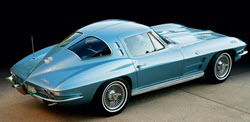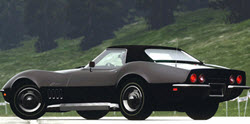The significance of the 1953 Corvette, the first model.
The Advent of a New Era in Automotive Design
The 1953 Corvette represents a pivotal moment in the annals of the American automotive industry. Emerging after the tumultuous period of World War II, this vehicle was not merely a mode of transportation but a revolutionary concept car introduced by Chevrolet. The Corvette was designed specifically to compete with the burgeoning popularity of European sports cars, marking its debut at the prestigious 1953 GM Motorama show in New York City. Its sleek lines and contemporary design captured the imagination of both the public and automotive enthusiasts, positioning the Corvette as a symbol of American ingenuity and style.
Design and Engineering
The 1953 Corvette stood out not only for its captivating aesthetics but also for its groundbreaking engineering. A key innovation was its use of a fiberglass body. At the time, this was a novel choice, primarily due to its weight advantages and cost-effectiveness when compared to traditional steel bodies. Fiberglass construction allowed for a more streamlined manufacturing process, enabling smoother lines and more intricate designs. Beneath the striking exterior, the Corvette was powered by the “Blue Flame” inline-six engine, which was coupled with a two-speed Powerglide automatic transmission. Although this engine was considered underpowered in comparison to later models, it laid the foundation for the Corvette’s future as a performance-oriented vehicle.
Production and Availability
The production of the 1953 Corvette was intentionally limited, with only 300 units produced. Each of these cars was meticulously hand-built in Flint, Michigan, an approach that added to their exclusivity and appeal. The limited production run not only created rarity but also inspired a strong demand among collectors and enthusiasts. Today, the 1953 Corvette is highly coveted, representing a prime example of early American sports car innovation and the meticulous craftsmanship of the era.
Aesthetics and Features
From an aesthetic perspective, the 1953 model was characterized by its minimalist design approach, which focused on providing an unadulterated sports car experience. Some of the notable features included a fully retractable convertible top, designed to offer both functionality and style. The dashboard was simple yet functional, emphasizing the car’s sports pedigree. Another distinctive feature was the curved windshield, which not only provided an unobstructed view but also contributed to the vehicle’s aerodynamic profile. The car was available exclusively in Polo White, paired with a Sportsman Red interior, a color combination that accentuated its luxurious and sporty appearance.
Legacy and Influence
While the performance of the 1953 Corvette may not have rivaled that of its successors, its influence was profound and far-reaching. The model set the stage for a series of Corvettes that would prioritize innovation, performance, and style. The Corvette became a cultural icon, representing a transformative period in American car culture and inspiring advancements in automotive design and engineering for future generations. Its legacy is a testament to the vision and ambition of the mid-20th-century American auto industry.
To delve deeper into vintage automobiles and their impact on the evolution of car manufacturing, you can explore additional resources. From studying these historical models, one can gain insights into the technological advancements and design philosophies that continue to shape modern automotive engineering.



